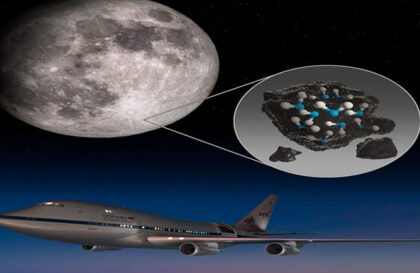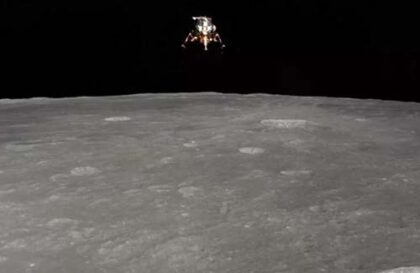The solar wind removes the remnants of the atmosphere from Mars. But the Moon resists the flow of hydrogen ions, keeping its gas shell.
Unlike Earth, the Moon has neither an atmosphere nor a magnetic field, which means that the surface of the Moon is directly exposed to the solar wind. This solar wind consists of hydrogen ions that bombard the Moon’s surface and can cause various effects, including creating a thin layer of helium-3 gas.
The Moon’s atmosphere is a rarefied gas shell, the density of which is ten trillion times less than that of the Earth’s atmosphere. It mainly comprises helium-4, neon, argon, and small amounts of other gases such as hydrogen and methane. The moon cannot hold gases for an extended time, so the atmosphere is rarefied.
The Moon is known for its almost complete absence of the traditional atmosphere that most planets and other moons have, and its surface is completely open to space, making it vulnerable to intense cosmic impacts and solar radiation. Without the atmosphere’s protective layer, the Moon also becomes a dry and waterless space object.
Although the Moon does not have a traditional atmosphere, scientists have discovered the faint presence of what they call an exosphere. This exosphere consists of rare layers of gas that are almost wholly absent compared to Earth’s atmosphere. The main components of the Moon’s exosphere are sodium, potassium, argon, and helium, which constantly evaporate from the Moon’s surface and are ionized by solar radiation.
Scientific study of the lunar atmosphere has a long history, dating back to the first lunar missions in the 1960s. These missions provided the first direct measurements of the Moon’s atmosphere, revealing its extremely low density and composition. Since then, numerous spacecraft have been sent to the Moon to study its atmosphere and other features in more detail, including the Apollo missions and more recent missions such as the Lunar Reconnaissance Orbiter.
In 2009, water was discovered on the moon.
Credit: NASA
NASA’s Artemis program aims to ensure a sustainable human presence on the Moon by 2024 with plans for scientific research. The agency is working to develop technologies to support future lunar missions, including transporting oxygen to a lunar colony.
The Moon’s atmosphere plays a role in the tidal forces on Earth. These tides occur twice a month and are caused by the gravitational pull of both the Sun and the Moon on Earth’s oceans.
The Moon’s atmosphere also has the potential to colonize the Moon. Colonization of the Moon would require the construction of multiple complexes and structures, as well as the extraction of resources on site.
Banner image: NASA/JPL/USGS
Image credit:
https://www.nasa.gov
https://www.indiatimes.com






